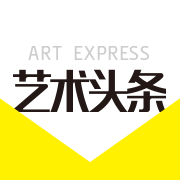
ARTINFO India’s First Impressions of UAF 2013
2013-09-16 18:36:02 未知
Around 6pm on Saturday, September 14, this writer bumped into Julie Skarland, whose fashion-meets-art pieces she was expecting to encounter at the opening of the second edition of the United Art Fair. Skarland, who was traipsing around with a friend, looked as incredulous as I. “Where can I find your work?” I asked. “That’s a good question. I’m looking for it myself.”
An hour later, Skarland had all but given up. “Do you know where I can find Peter?” she asked helplessly as we bumped into each other once again. “He’s around somewhere.” Given its somewhat needlessly epic scale, finding Peter Nagy, the UAF’s artistic director, would have been a herculean task.
Skarland was not the only one whose works were missing, sound artist Hemant Sreekumar, who was meant to debut a triptych of plotter prints, found only two hung up on the wall, however prominently.*
While this could be written off as a simple case of a logistical goof-up, for the 230-odd artists showing at what has been pitted as Asia’s largest artist-driven fair, the cost of this faux pas can be significant. Although propped as a fair that ensures a platform for emerging artists who do not have the luxury of being represented by a gallery or showing in anything akin to a white-cube space, the UAF’s model required each participating artist to compulsorily donate one work to the fair’s permanent collection. In addition, 50% of the money earned from a sale would go to the fair as a commission. This profit-sharing model had been finally arrived at during the inaugural edition last year after the unsuccessful initial attempt to have artists put in at least Rs35,000 to procure a booth. While it may seem like fair game, the direct consequence of the model the fair has evolved is quite simple and unfortunate. Most artists are reluctant to showcase their best work. The outcome? A tendency towards a surplus of mediocrity.
Also, the case of Skarland’s and Sreekumar’s missing work is by no means negligible considering the fair’s organizer, Anuraag Sharma’s United Art Logistics, is an art moving company, which means professional handling and efficient logistical support should be a given. However, the fact that the fair even managed to open as per schedule was a feat in itself. That Nagy and his five-member curatorial team had burnt the midnight oil in tough conditions, with no air conditioning or access to even a working bathroom, was an open secret. Nagy and his team pulled it off, though, and with élan.
To start with, Nagy’s L-shaped layout emphasized wide corridors that provided a reasonable amount of relief from what could otherwise have been an overwhelming experience. Nagy ingeniously interspersed the mediocre artworks with stronger ones, allowing for an impressive degree of surprise and discovery. While some visitors argued that the mash-up of painting with photography didn’t enforce a pleasurable or easy viewing experience, this writer thought otherwise. However, the distinct indulgence of portraits within the photography selection was an overkill. As was the somewhat questionable inclusion of too many works by tribal and folk artists that didn’t necessarily sit well with the rest of the fair. The long end of the L-shaped space had the strongest selection while its shorter counterpart was full of hits and misses. We did, however, appreciate the presence of elaborate captions that accompanied almost every work and the transparency in terms of the price of individual works.
The posters greeting visitors from the Pragati Maidan entrance to the halls where the second edition was being held, all advertised the fact that the UAF was showing 300 artists and 2,000 works. While this is definitely a scaled down version of last year’s overblown roster of 600 artists, it could still have been trimmed further — not all the so-called discoveries made by the curators were worth the wall space they were hung on.
Still, Nagy’s curatorial inputs gave the fair’s core concept the facelift it required, salvaging it from the cringe-inducing evangelical fervor of its previous avatar. By the end of the evening several artists were elated that works they didn’t expect to sell had in fact found buyers. But now that the UAF has crossed the two-year mark, the organizer Sharma, needs to step up his game if he wants the Indian art world to treat the fair with the same degree of seriousness and professionalism with which it does the India Art Fair.
*The missing works had been found and installed by the afternoon of September 15, Day 1 of the general opening.
(责任编辑:张天宇)
注:本站上发表的所有内容,均为原作者的观点,不代表雅昌艺术网的立场,也不代表雅昌艺术网的价值判断。

 阿拉里奥画廊上海转型:为何要成为策展式艺术商业综合体?
阿拉里奥画廊上海转型:为何要成为策展式艺术商业综合体? 吕晓:北京画院两个中心十年 跨学科带来齐白石研究新突破
吕晓:北京画院两个中心十年 跨学科带来齐白石研究新突破 “纤维”提问2022:存在何“缓”?
“纤维”提问2022:存在何“缓”? 春雨斋主人房茂梁:“好运气”的90后古玩经纪人
春雨斋主人房茂梁:“好运气”的90后古玩经纪人
全部评论 (0)